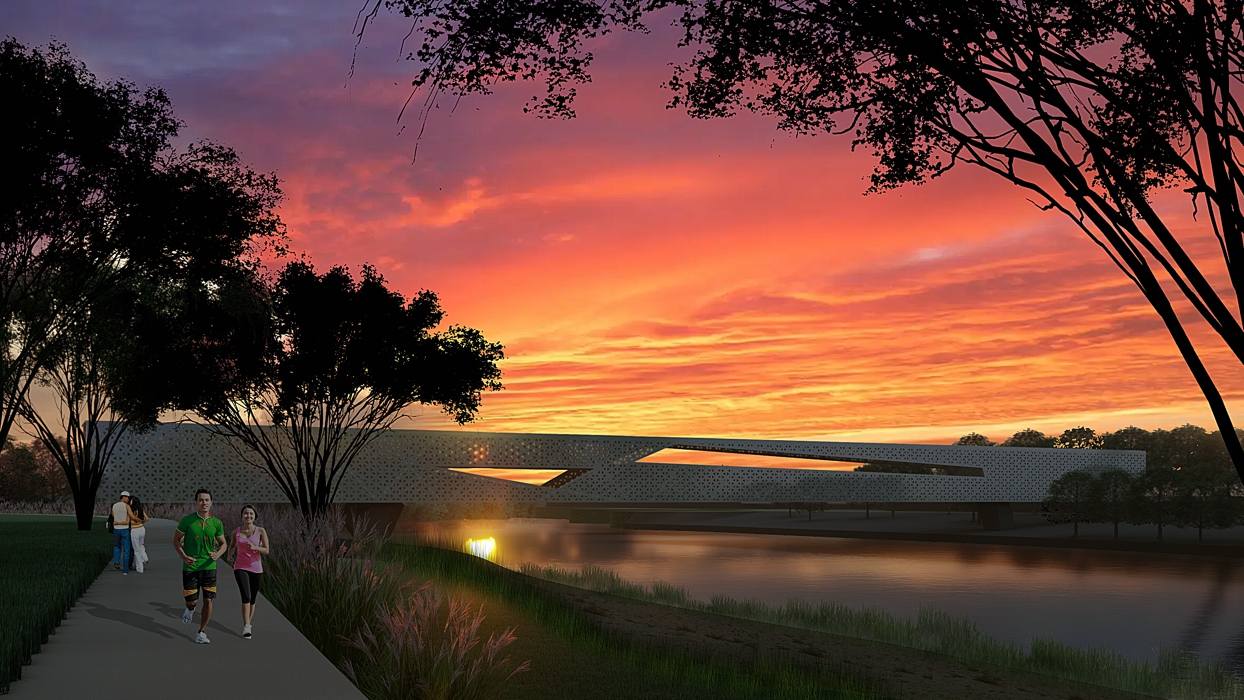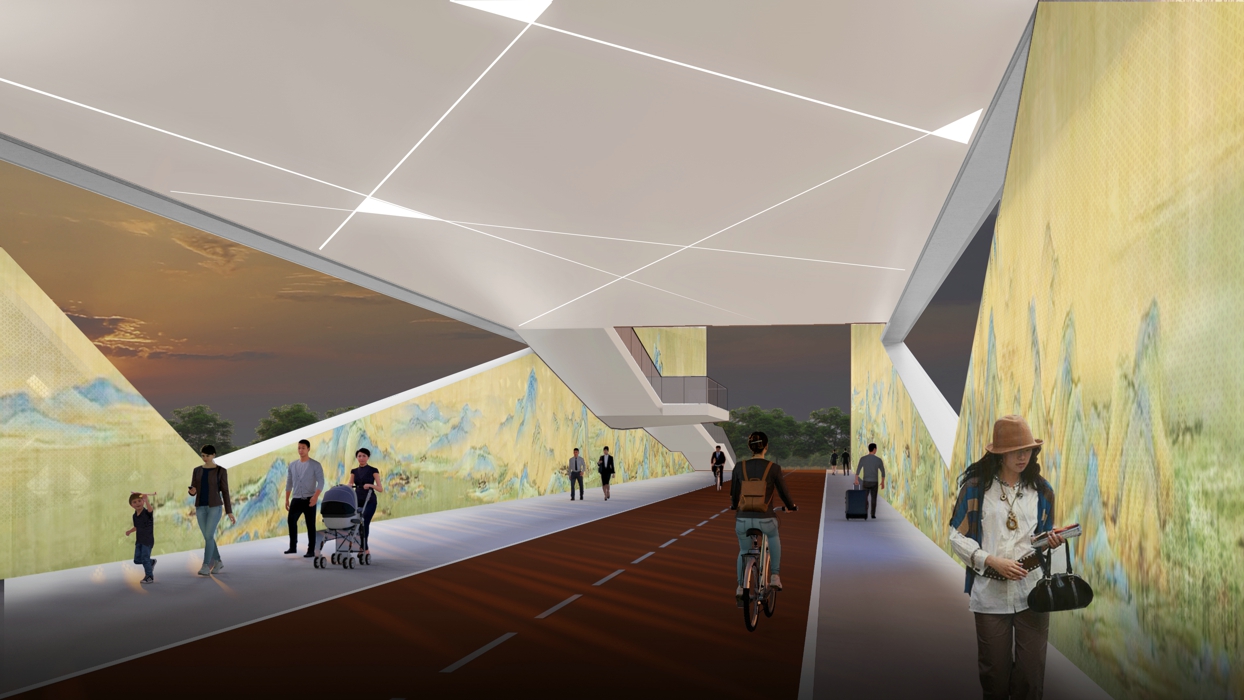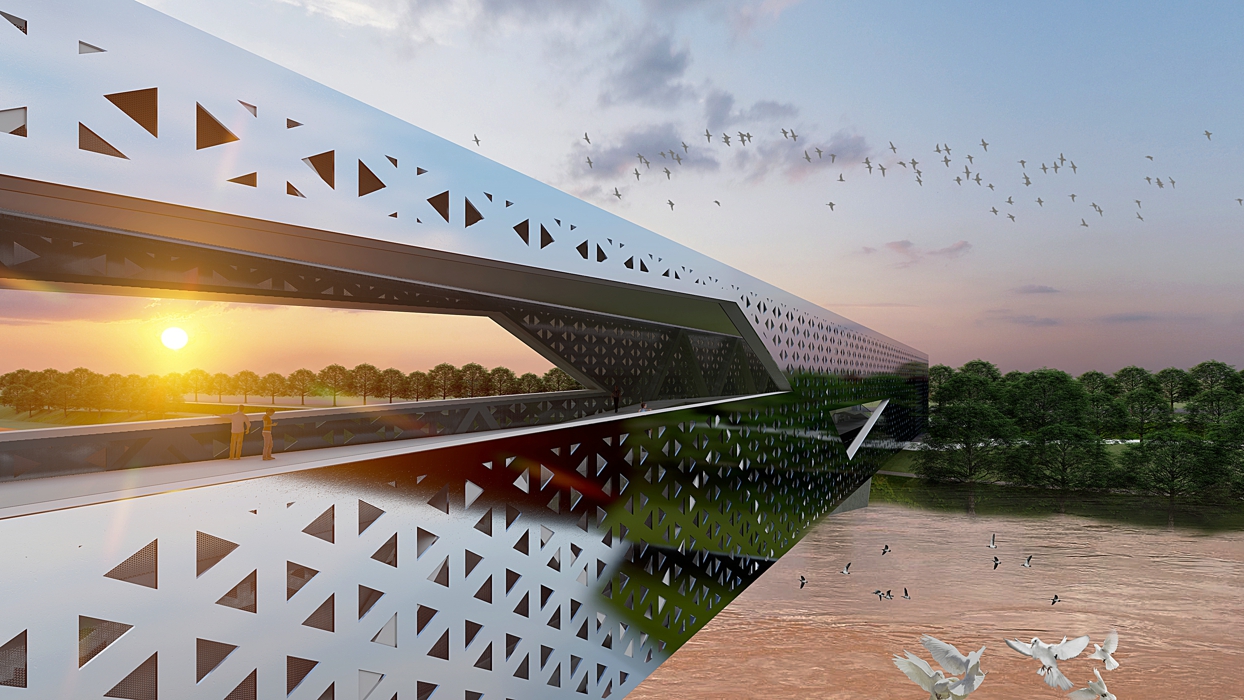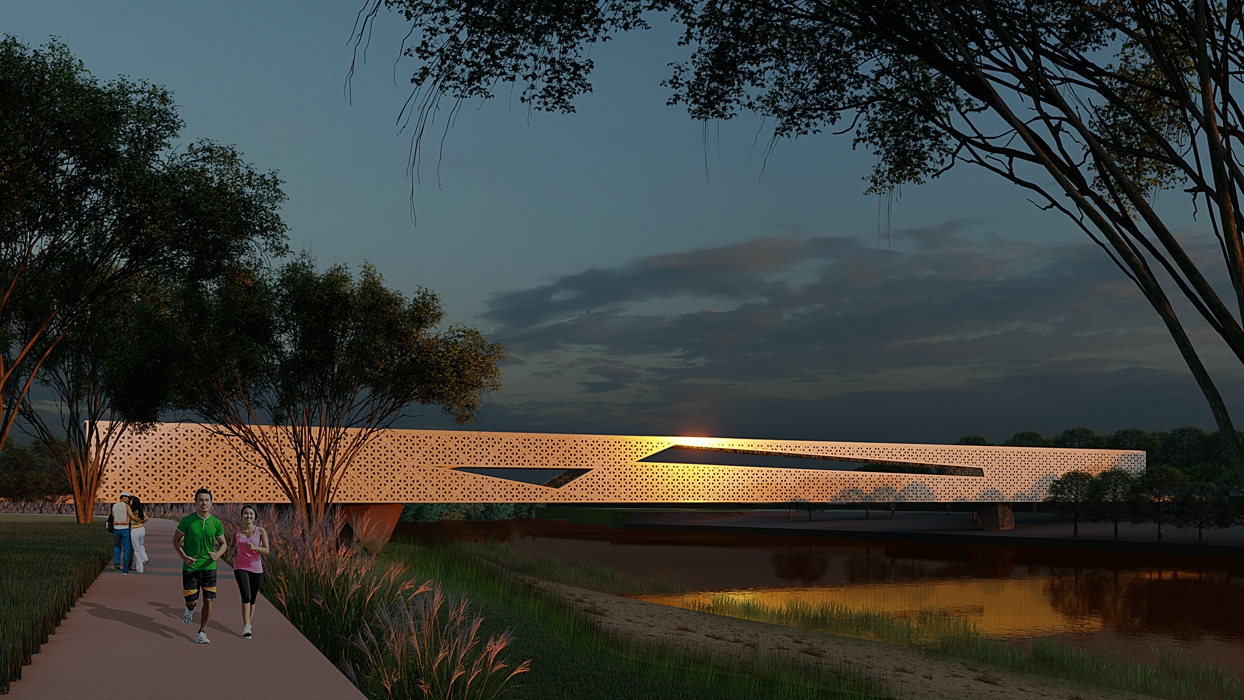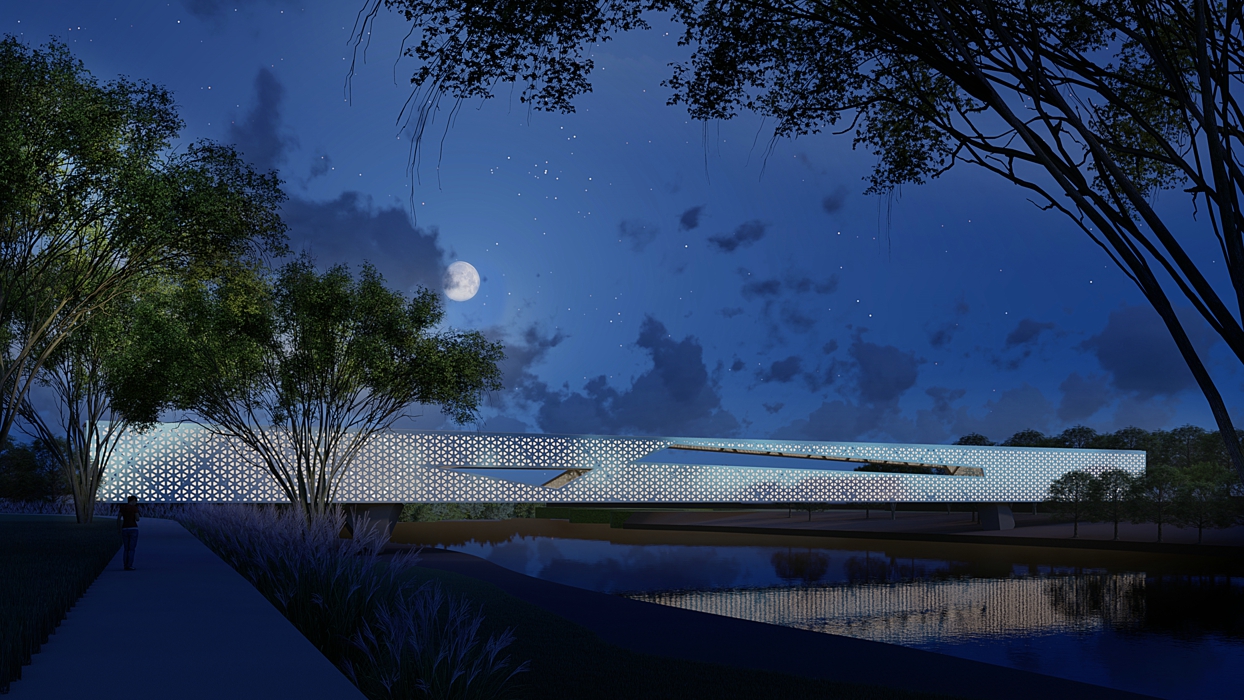Lanzhou Huixiu Bridge across the Yellow River
Project Information
- Project Location:
- China Lanzhou, Gansu
- Project Scale:
- 300m
- Design Time:
- May 2022
Project Profile
The project is located in Lanzhou, Gansu Province. One hundred years ago, the Zhongshan Bridge, designed by an American bridge company and built by the German Tailai Trading Company with Chinese craftsmen, became the first bridge in modern Chinese history built with foreign technology introduced to Lanzhou, Gansu, and the entire northwest region. One century later, there should stand a pedestrian bridge across the Yellow River independently designed, constructed, and built by the Chinese, surpassing the historical Zhongshan Bridge in Lanzhou, symbolizing the new era of ecological protection and high-quality development in the Yellow River Basin.
Huixiu Bridge is a super-large bridge spanning approximately 300 meters across the Yellow River with a single span of about 260 meters. It adopts a staggered upper and lower steel truss structure, with the structure concealed within the side panels. The bridge features three-dimensional traffic with separated pedestrian and bicycle flows. The second level includes layered activity and viewing platforms, where visitors can enjoy varying views and experiences as the bridge height changes. The art and science exhibition space uses projection technology, with projectors and related equipment hidden inside the structural layers. Located at the center connecting Yintan Wetland, Yellow River Tower, and the Olympic Sports District, the bridge meets the connection needs among these sites while avoiding impact on the Yintan landscape and migratory bird habitats, ensuring good visibility from the bridge. The ecological restoration and environmental enhancement project along the Olympic Sports Zone riverside extends eastward, linking landmarks such as Yellow River Tower, Yintan Wetland Park, Huaxia Ancestor Cultural Park, Lanzhou Old Street, and Matan Rural Wetlands.
The design concept of Huixiu Bridge is “The Confluence of Heaven, Earth, and Culture, a New Interpretation of the Wind and Rain Corridor Bridge.” It inherits the multi-functional spatial concept of traditional wind and rain corridor bridges, which not only serve basic transportation but also offer shelter from wind and rain, scenic viewing, social interaction, and serene experience. This corridor-style architecture bridges over the river with multiple functions. By applying contemporary design methods, technology, and materials, the bridge innovates on traditional multi-functionality and spatial structure, becoming not only a spatial link between the two banks of the Yellow River but also an art and science exhibition corridor, a new city landmark, and a city viewing balcony.

